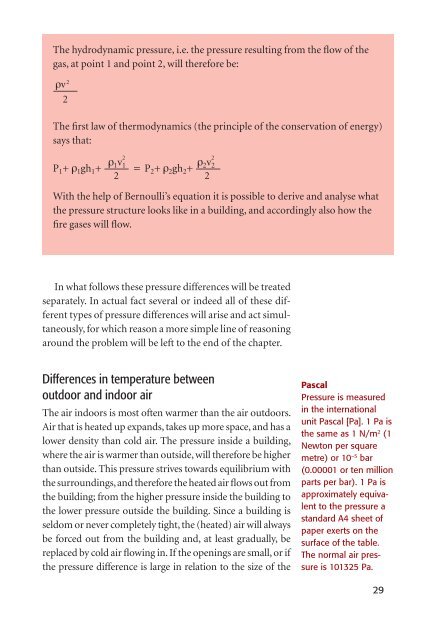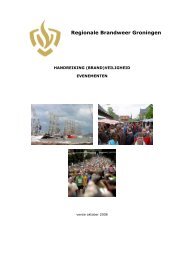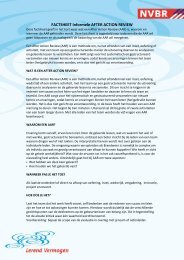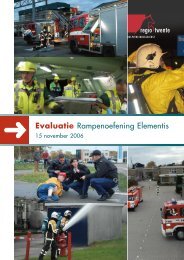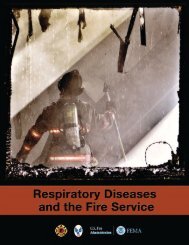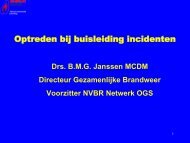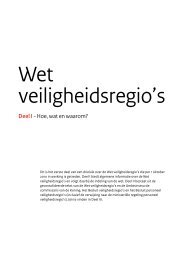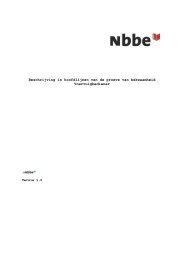Fire ventilation
Fire ventilation
Fire ventilation
- No tags were found...
Create successful ePaper yourself
Turn your PDF publications into a flip-book with our unique Google optimized e-Paper software.
The hydrodynamic pressure, i.e. the pressure resulting from the flow of thegas, at point 1 and point 2, will therefore be:ρv 2−−−−−2The first law of thermodynamics (the principle of the conservation of energy)says that:ρ 1 v 2 1 ρ 2 v 2 2P 1 + ρ 1 gh 1 + −−−−− = P 2 + ρ 2 gh 2 + −−−−−2 2With the help of Bernoulli’s equation it is possible to derive and analyse whatthe pressure structure looks like in a building, and accordingly also how thefire gases will flow.In what follows these pressure differences will be treatedseparately. In actual fact several or indeed all of these differenttypes of pressure differences will arise and act simultaneously,for which reason a more simple line of reasoningaround the problem will be left to the end of the chapter.Differences in temperature betweenoutdoor and indoor airThe air indoors is most often warmer than the air outdoors.Air that is heated up expands, takes up more space, and has alower density than cold air. The pressure inside a building,where the air is warmer than outside, will therefore be higherthan outside. This pressure strives towards equilibrium withthe surroundings, and therefore the heated air flows out fromthe building; from the higher pressure inside the building tothe lower pressure outside the building. Since a building isseldom or never completely tight, the (heated) air will alwaysbe forced out from the building and, at least gradually, bereplaced by cold air flowing in. If the openings are small, or ifthe pressure difference is large in relation to the size of thePascalPressure is measuredin the internationalunit Pascal [Pa]. 1 Pa isthe same as 1 N/m 2 (1Newton per squaremetre) or 10 –5 bar(0.00001 or ten millionparts per bar). 1 Pa isapproximately equivalentto the pressure astandard A4 sheet ofpaper exerts on thesurface of the table.The normal air pressureis 101325 Pa.29


